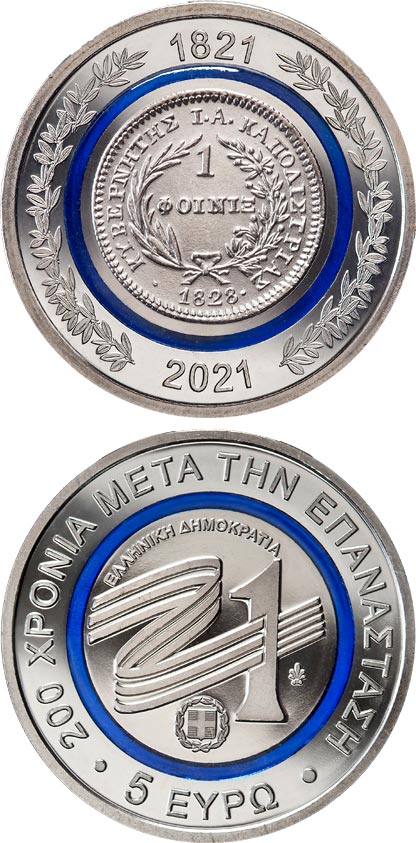5 euro - The First Coins of the Greek State - The Phoenix

One of the first measures taken by Governor Ioannis Kapodistrias to organise the newly established Greek state, assert its independence and replace foreign currencies in transactions was to issue a national currency. On 29 July 1828, the Fourth National Assembly of Argos introduced the first modern Greek monetary system, based on the “phoenix”, divided into 100 lepta.
The first silver phoenix coins were struck on 27 June 1829 in the courtyard of Kapodistrias’s house in Aegina under the supervision of Alexandros Kontostavlos, on a 1530 press purchased from the Knights of St John of Malta. The first dies were engraved by goldsmith Hatzi-Grigoris Pyrovolistis, followed later by Georgios Papakonstantopoulos, Georgios Dimitrakopoulos and Dimitrios Kontos.
The currency was named after the mythical phoenix, the bird that rises from its ashes, symbolising Greece’s rebirth. The obverse of the silver phoenix depicts the mythical bird, its wings outspread and its gaze turned to the Cross and the rays of the Holy Spirit. Encircling the theme is the inscription «ΕΛΛΗΝΙΚΗ ΠΟΛΙΤΕΙΑ» (“GREEK STATE”). Below, the Greek letter-numerals «αωκα΄» correspond to the year 1821. The reverse, which is reproduced on the reverse side of the present coin, features the denomination (1 PHOENIX) within a wreath of two branches (one laurel and one olive), surrounded by the inscription «ΚΥΒΕΡΝΗΤΗΣ Ι.Α. ΚΑΠΟΔΙΣΤΡΙΑΣ» (“GOVERNOR I.A. KAPODISTRIAS”). Below is inscribed the minting year (1828, when the decision to introduce the phoenix was taken).